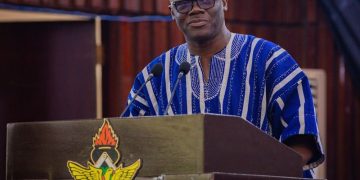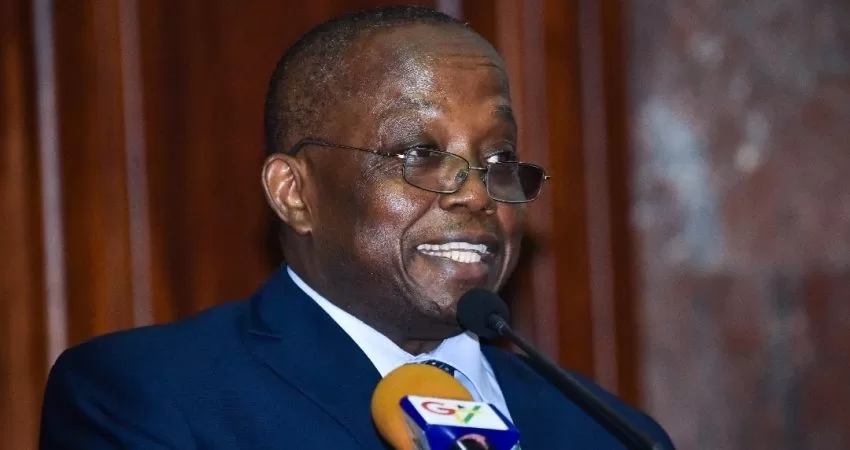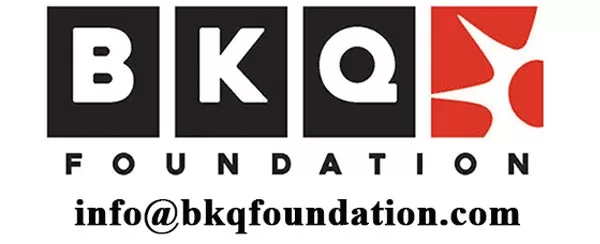 Economic viability
The proposed programme on the face value is deduced as some kind of a social intervention programme to cushion young people who are aggressively searching for economic opportunities. Some have argued that, it is erroneous to assess the economic viability of the proposed programme given the social orientation and the possible intrinsic value to be accumulated over time.
However, this is deceptive! Back of envelop computations indicate that the direct salary cost item alone under the programme could reach some GHS840 million per annum [equivalent to 2.1% of domestic tax revenue including tax revenue from the petroleum sector for 2018]. Clearly to complete the first-year execution of the programme, an additional GHS240million will be required to cover up only the total salary payments due under the programme[2]. Assuming the the mid-point of 10% and 25% which is considered generally as the average cost of general administration of a project is added to this, an additional GHS105million thereabouts will be required per annum. Without accounting for any other potential costs and underlying drivers, a total of GHS945million will be required at least for the first year of the programme, increasing the additional requirement from the salary adjustment of GHS240million to GHS345million. The economy must definitely get something in return for this investment!
Economic viability
The proposed programme on the face value is deduced as some kind of a social intervention programme to cushion young people who are aggressively searching for economic opportunities. Some have argued that, it is erroneous to assess the economic viability of the proposed programme given the social orientation and the possible intrinsic value to be accumulated over time.
However, this is deceptive! Back of envelop computations indicate that the direct salary cost item alone under the programme could reach some GHS840 million per annum [equivalent to 2.1% of domestic tax revenue including tax revenue from the petroleum sector for 2018]. Clearly to complete the first-year execution of the programme, an additional GHS240million will be required to cover up only the total salary payments due under the programme[2]. Assuming the the mid-point of 10% and 25% which is considered generally as the average cost of general administration of a project is added to this, an additional GHS105million thereabouts will be required per annum. Without accounting for any other potential costs and underlying drivers, a total of GHS945million will be required at least for the first year of the programme, increasing the additional requirement from the salary adjustment of GHS240million to GHS345million. The economy must definitely get something in return for this investment!  It will be strange but not out of the ordinary if the designers of the programme for instance intend to inject nearly twice the compensation package of all the economic ministries into this programme without expecting a significant return in terms of productivity for the foregoing year. Even more dangerous will be the annual investment of this nature over the medium term which will not be tied to any form of productivity metric, based on which it will be assessed beyond the mere number of beneficiaries. The scenario could even get alarming if one considers some of the objectives of the programme outlined above, which give impetus for one to be curious about the expectations in terms of productivity from the programme.
The argument could be made that, this has been appropriately considered in the determination of the productivity for the foregoing year and subsequent years. This could only lead to more questions about the economic rationale for the project as the number of temporary jobs created will be approximately 1/6 of the total permanent employment in the public sector, which could effectively revive the effectiveness and efficiency of the public sector in the economy. Answers are desperately needed!
Source: Franklin Cudjoe | President of IMANI Ghana]]>
It will be strange but not out of the ordinary if the designers of the programme for instance intend to inject nearly twice the compensation package of all the economic ministries into this programme without expecting a significant return in terms of productivity for the foregoing year. Even more dangerous will be the annual investment of this nature over the medium term which will not be tied to any form of productivity metric, based on which it will be assessed beyond the mere number of beneficiaries. The scenario could even get alarming if one considers some of the objectives of the programme outlined above, which give impetus for one to be curious about the expectations in terms of productivity from the programme.
The argument could be made that, this has been appropriately considered in the determination of the productivity for the foregoing year and subsequent years. This could only lead to more questions about the economic rationale for the project as the number of temporary jobs created will be approximately 1/6 of the total permanent employment in the public sector, which could effectively revive the effectiveness and efficiency of the public sector in the economy. Answers are desperately needed!
Source: Franklin Cudjoe | President of IMANI Ghana]]>
IMANI Alert: What value will the Nation Builders Corps Programme bring to the Economy? NABCO not NACOB
Reading Time: 3 mins read
Recent Posts
- NPP accuses NDC of lawlessness, demands urgent re-collation by EC in disputed constituencies
- Anytime there’s vigilance, NDC wins – Malik Basintale
- Akufo-Addo statue in Takoradi suffers partial damage amid controversy
- Current financial year proving challenging for COCOBOD – IMF
- Agona West NPP expels Regional Minister, 282 others for anti-party activities
- Cholera outbreak in Western region claims 14 lives, over 800 cases recorded
- Sabotage allegations rock NDC in North Dayi: Akua Sena Dansua et al fingered
- “Re-collation and re-declaration” of winners at Police Training School in Accra illegal – NDC to EC
Popular Stories
-
Agona West NPP expels Regional Minister, 282 others for anti-party activities
-
Akufo-Addo statue in Takoradi suffers partial damage amid controversy
-
Current financial year proving challenging for COCOBOD – IMF
-
Anytime there’s vigilance, NDC wins – Malik Basintale
-
NPP accuses NDC of lawlessness, demands urgent re-collation by EC in disputed constituencies

ABOUT US
Newstitbits.com is a 21st Century journalism providing the needed independent, credible, fair and reliable alternative in comprehensive news delivering that promotes knowledge, political stability and economic prosperity.
Contact us: [email protected]
@2023 – Newstitbits.com. All Rights Reserved.












